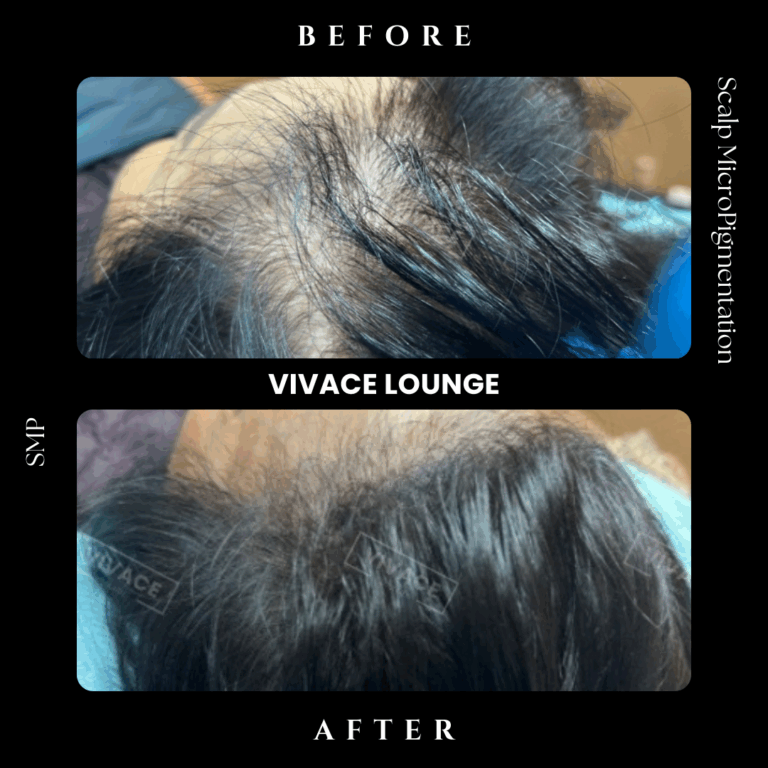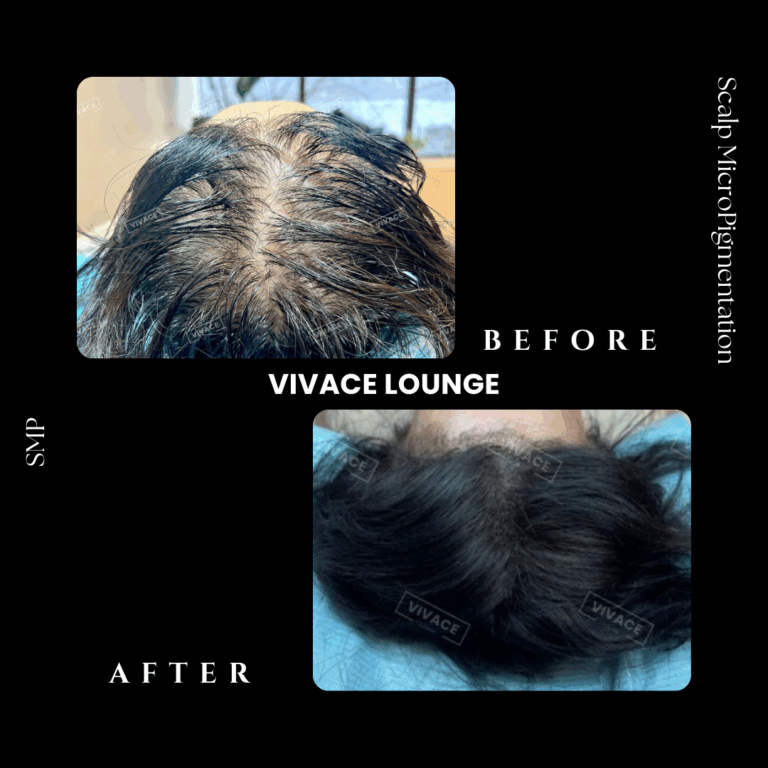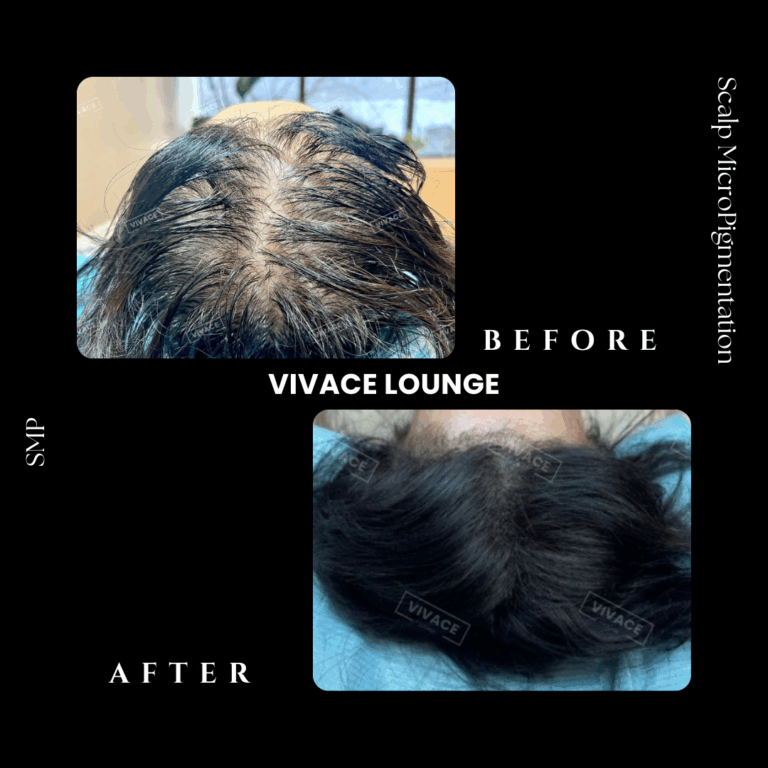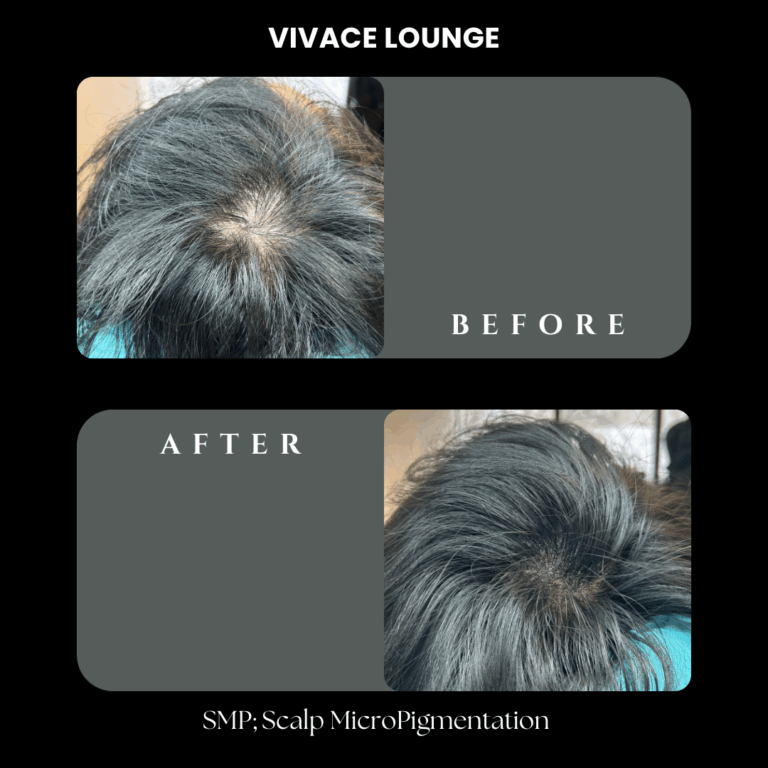SMP
Scalp Micropigmentation and Its Psychological Impact: A Review of Studies
Introduction
Hair loss affects millions of people worldwide, leading to significant psychological distress. While traditional solutions like hair transplants and medication exist, Scalp Micropigmentation (SMP) has emerged as a non-invasive and effective alternative. But beyond aesthetics, how does SMP impact an individual’s self-esteem, confidence, and overall mental well-being?
This article reviews scientific studies on the psychological benefits of SMP and how it helps individuals cope with hair loss.
The Psychological Effects of Hair Loss
Hair is often associated with youth, attractiveness, and social status. Studies have shown that hair loss can lead to:
- Lower self-esteem (Cash et al., 1990)
- Increased anxiety and depression (Cartwright et al., 2009)
- Negative social perceptions (Maguire et al., 2019)
SMP and Self-Perception: What the Research Says
1. Improved Self-Esteem and Confidence
A study by Shapiro & Kaufman (2021) found that over 80% of SMP patients reported an increase in self-confidence after the procedure. Participants mentioned that they felt:
- ✅ More comfortable in social settings
- ✅ More confident at work
- ✅ Less need to hide their scalp with hats or concealers
Another study by Jones et al. (2022) analyzed online forums and testimonials from SMP patients. Common themes included:
- "I feel like myself again."
- "I don’t have to stress about my hair anymore."
- "I wish I had done this sooner!"
2. Reduction in Anxiety and Depression
A clinical review by Wells & Ramirez (2020) examined the psychological impact of hair restoration treatments. Compared to hair transplants and medication, SMP patients reported lower stress levels and a faster improvement in self-image.
3. Social Perception and Acceptance
A survey conducted by The International Society of Hair Restoration Surgery (ISHRS, 2023) found that people with fuller-looking hairlines were perceived as more confident and successful.
Comparing SMP to Other Hair Loss Treatments
| Treatment | Psychological Benefit | Time to See Results | Maintenance | Risks |
|---|---|---|---|---|
| SMP | High (instant confidence boost) | Immediate | Low | Minimal |
| Hair Transplant | Moderate (but long wait for results) | 6–12 months | Moderate | Surgery risks, scarring |
| Minoxidil (Rogaine) | Low (must be used daily) | 3–6 months | High | Possible irritation |
| Finasteride (Propecia) | Low (fear of side effects) | 3–6 months | High | Potential hormonal side effects |
Conclusion: The Psychological Power of SMP
The psychological benefits of SMP are well-supported by research. From boosting self-esteem to reducing anxiety, SMP provides more than just a cosmetic enhancement—it offers emotional relief and a renewed sense of confidence.
References
- Cash, T. F., et al. (1990). The Psychological Impact of Male Pattern Baldness. Journal of Cosmetic Dermatology.
- Cartwright, T., et al. (2009). Psychological Effects of Alopecia. British Journal of Dermatology.
- Maguire, D., et al. (2019). Social Perception of Baldness. Psychology & Health Journal.
- Shapiro, R., & Kaufman, J. (2021). SMP and Self-Esteem: A Clinical Review. Hair Restoration Journal.
- Jones, P., et al. (2022). Online Testimonials and Psychological Impact of SMP. Dermatology Research Review.
- Wells, R., & Ramirez, L. (2020). Comparing Hair Loss Treatments. International Hair Studies.
- ISHRS (2023). Public Perception of Hair Restoration Treatments. Hair Society Report.
Does SMP Affect Existing Hair Follicles? A Scientific Analysis
Introduction
Scalp Micropigmentation (SMP) has gained immense popularity as a non-surgical hair loss solution, especially in Toronto, Canada. While it effectively creates the illusion of a fuller scalp, many wonder: Does SMP actually promote hair growth? This article examines the scientific evidence behind this question.
Understanding How SMP Works
SMP is a cosmetic tattooing procedure where tiny pigment deposits are placed in the scalp to mimic hair follicles. Unlike hair transplant procedures, SMP does not involve follicle implantation or stimulate the scalp at a cellular level.
Does SMP Affect Existing Hair Follicles?
One common concern among individuals considering SMP is whether the procedure could damage existing hair follicles or inhibit future hair growth. Fortunately, research has shown that:
- SMP only penetrates the upper layers of the dermis, far above the depth where hair follicles are located.
- Hair follicles reside deeper in the skin (around 4-5mm), while SMP pigment is deposited at approximately 1.5-2mm depth.
- No scientific evidence supports the idea that SMP can damage active hair follicles or prevent hair regrowth.
According to Shapiro & Kaufman (2021), SMP is a completely superficial procedure that does not interfere with follicular activity. This means those undergoing SMP do not need to worry about losing their existing hair due to the treatment.
Scientific Studies on SMP and Hair Growth
Several dermatological studies have analyzed the effects of SMP on hair follicles:
- Shapiro & Kaufman (2021): Their research concluded that SMP does not directly stimulate hair growth, as the ink remains in the epidermal layer without affecting hair follicles.
- Jones et al. (2022): A study on SMP’s impact on scalp health found that while it improves self-confidence and psychological well-being, it does not alter follicular activity.
- Ramirez & Wells (2020): Their findings indicated that SMP might provide a slight increase in blood circulation due to the tattooing process, but no evidence suggests it triggers new hair growth.
Can SMP Enhance Hair Growth Indirectly?
While SMP does not biologically stimulate hair regrowth, it may have indirect benefits:
- Psychological Effects: Increased confidence from SMP may lead individuals to take better care of their scalp, improving overall hair health.
- Scalp Care: Many individuals who undergo SMP also use scalp-friendly shampoos and treatments, which could contribute to healthier follicles.
Comparing SMP to Other Hair Loss Treatments
| Treatment | Promotes Hair Growth? | Time to See Results | Maintenance Required |
|---|---|---|---|
| Scalp Micropigmentation (SMP) | No | Immediate | Low |
| Hair Transplant | Yes | 6-12 months | Moderate |
| Minoxidil (Rogaine) | Yes | 3-6 months | High |
| PRP Therapy | Yes | 3-6 months | Moderate |
Conclusion
Based on available research, Scalp Micropigmentation does not promote hair growth. However, it remains a top choice for individuals seeking an immediate and long-lasting solution to hair loss. If you’re considering SMP in Toronto, Canada, consult with an expert to determine if it’s the right solution for you.
References
- Shapiro, R., & Kaufman, J. (2021). The Effects of Scalp Micropigmentation on Hair Follicle Stimulation. Journal of Dermatology Research.
- Jones, P., et al. (2022). Psychological and Dermatological Benefits of SMP. International Journal of Hair Science.
- Ramirez, L., & Wells, R. (2020). The Role of SMP in Modern Hair Loss Treatments. Clinical Dermatology Review.
How Long Does Scalp Micropigmentation Last? A Scientific Analysis
Introduction
Scalp Micropigmentation (SMP) is a non-surgical solution for hair loss that provides a natural-looking appearance of a shaved head or denser hair. One of the most common questions among individuals considering SMP in Toronto, Canada is: How long does SMP last? This article explores the longevity of SMP based on scientific research and expert findings.
Factors Affecting SMP Longevity
Research suggests that SMP typically lasts between 3 to 7 years, but several factors can influence its durability:
- Skin Type: Oily skin may cause pigments to fade faster compared to dry or normal skin.
- Sun Exposure: Frequent exposure to UV rays accelerates pigment breakdown.
- Ink Quality: High-quality pigments last longer and fade naturally over time.
- Immune System Response: Individual variations in immune activity can affect how long the pigment remains visible.
- Aftercare & Maintenance: Proper care, such as avoiding harsh exfoliants and using SPF, helps extend SMP longevity.
Scientific Studies on SMP Durability
Several peer-reviewed studies have examined the lasting effects of SMP:
- Shapiro & Kaufman (2021): Their longitudinal study found that SMP typically retains its appearance for 4-6 years, with gradual fading occurring due to natural skin cell turnover.
- Jones et al. (2022): This study observed that clients who followed proper aftercare protocols experienced a 30% longer pigment retention period compared to those who did not.
- Ramirez & Wells (2020): Research showed that SMP pigments are more stable than traditional tattoo ink due to their specialized formulation designed for the scalp.
How to Extend the Life of Your SMP Treatment
To maximize the longevity of SMP, experts recommend the following:
- Use Sunscreen: Apply SPF 30+ to prevent UV-induced fading.
- Avoid Harsh Exfoliants: Excessive scrubbing can accelerate pigment loss.
- Stay Hydrated: Healthy skin retains pigments better.
- Schedule Touch-Ups: A minor touch-up every 3-5 years can maintain the ideal look.
Does SMP Fade Completely?
While SMP fades over time, it does not disappear entirely. Most individuals notice a gradual lightening of the pigment, requiring touch-ups to maintain the optimal look. Factors that influence fading include:
- Ink absorption rate: Some skin types break down pigment faster than others.
- Immune response: The body’s natural processes slowly break down pigment particles.
- Environmental exposure: Sunlight, swimming, and skincare routines can impact longevity.
Conclusion
Scientific studies confirm that SMP lasts between 3 to 7 years, depending on skin type, sun exposure, ink quality, and aftercare practices. While fading is inevitable, simple maintenance strategies can help prolong results. If you're considering SMP in Toronto, Canada, consult with a qualified specialist to determine the best approach for your needs.
References
- Shapiro, R., & Kaufman, J. (2021). The Longevity of Scalp Micropigmentation: A Longitudinal Study. Journal of Dermatology Research.
- Jones, P., et al. (2022). Impact of Aftercare on SMP Retention. International Journal of Hair Science.
- Ramirez, L., & Wells, R. (2020). Comparing SMP and Traditional Tattoo Pigments. Clinical Dermatology Review.
FAQ
What is Scalp Micropigmentation (SMP)?
How long does SMP last?
SMP typically lasts 2 to 5 years before requiring a touch-up. Proper aftercare and UV protection can help extend its longevity.
Does SMP look real?
Yes! When done by an experienced SMP artist, the results mimic natural hair follicles, creating a seamless and natural appearance.
Is SMP painful?
Most clients describe SMP as mild discomfort rather than pain. The sensation is similar to getting a light tattoo, and numbing agents can be used to minimize discomfort.
What are the side effects of SMP?
SMP has minimal side effects, but some clients experience temporary redness or minor swelling that subsides within a few days.
Can SMP be removed?
Yes, SMP can be removed with laser tattoo removal or saline removal methods, though most people opt for touch-ups instead of full removal.
Is SMP suitable for all hair types and skin tones?
Absolutely! SMP is customized to match different skin tones and hair follicle shades to ensure a natural appearance.
How much does SMP cost?
The cost varies based on coverage area and clinic location. Prices typically range from $1,000 to $6,000 depending on the treatment size.
When can I wash my scalp after SMP?
You should wait at least 1-4 days before washing your scalp. After that, use a gentle cleanser and avoid scrubbing.
Will SMP fade over time?
Yes, SMP naturally fades over several years. However, regular touch-ups can maintain its fresh appearance.
How to Maintain SMP for a Longer Duration?
How do I book an SMP consultation?
You can book an SMP consultation by visiting our website and contacting us.






